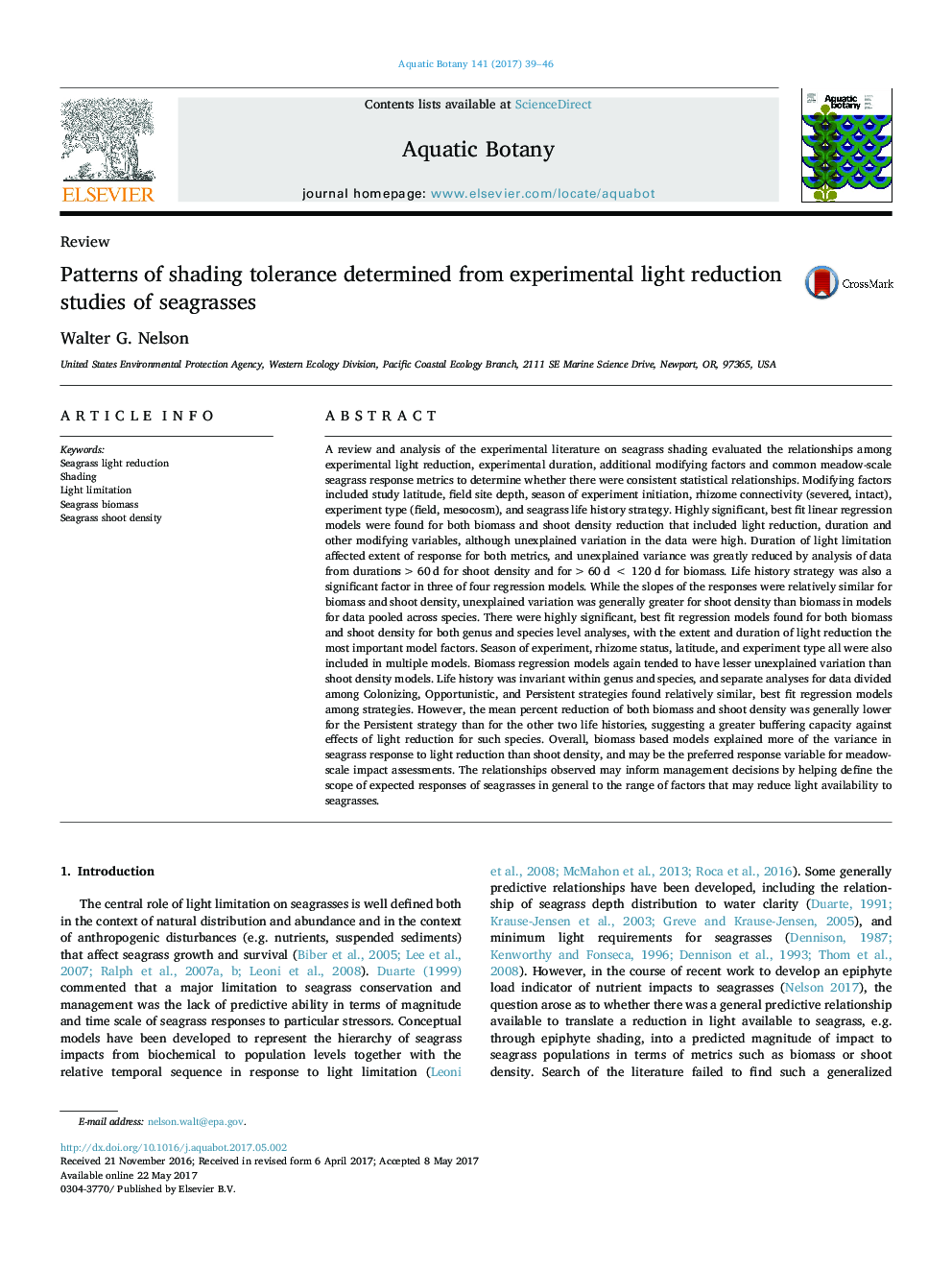| کد مقاله | کد نشریه | سال انتشار | مقاله انگلیسی | نسخه تمام متن |
|---|---|---|---|---|
| 5764014 | 1625801 | 2017 | 8 صفحه PDF | دانلود رایگان |
عنوان انگلیسی مقاله ISI
Patterns of shading tolerance determined from experimental light reduction studies of seagrasses
ترجمه فارسی عنوان
الگوهای تحمل سایه ای از مطالعات کاهش نور آزمایشی ساقه ها تعیین می شود
دانلود مقاله + سفارش ترجمه
دانلود مقاله ISI انگلیسی
رایگان برای ایرانیان
کلمات کلیدی
موضوعات مرتبط
علوم زیستی و بیوفناوری
علوم کشاورزی و بیولوژیک
علوم آبزیان
چکیده انگلیسی
A review and analysis of the experimental literature on seagrass shading evaluated the relationships among experimental light reduction, experimental duration, additional modifying factors and common meadow-scale seagrass response metrics to determine whether there were consistent statistical relationships. Modifying factors included study latitude, field site depth, season of experiment initiation, rhizome connectivity (severed, intact), experiment type (field, mesocosm), and seagrass life history strategy. Highly significant, best fit linear regression models were found for both biomass and shoot density reduction that included light reduction, duration and other modifying variables, although unexplained variation in the data were high. Duration of light limitation affected extent of response for both metrics, and unexplained variance was greatly reduced by analysis of data from durations >60 d for shoot density and for >60 d < 120 d for biomass. Life history strategy was also a significant factor in three of four regression models. While the slopes of the responses were relatively similar for biomass and shoot density, unexplained variation was generally greater for shoot density than biomass in models for data pooled across species. There were highly significant, best fit regression models found for both biomass and shoot density for both genus and species level analyses, with the extent and duration of light reduction the most important model factors. Season of experiment, rhizome status, latitude, and experiment type all were also included in multiple models. Biomass regression models again tended to have lesser unexplained variation than shoot density models. Life history was invariant within genus and species, and separate analyses for data divided among Colonizing, Opportunistic, and Persistent strategies found relatively similar, best fit regression models among strategies. However, the mean percent reduction of both biomass and shoot density was generally lower for the Persistent strategy than for the other two life histories, suggesting a greater buffering capacity against effects of light reduction for such species. Overall, biomass based models explained more of the variance in seagrass response to light reduction than shoot density, and may be the preferred response variable for meadow-scale impact assessments. The relationships observed may inform management decisions by helping define the scope of expected responses of seagrasses in general to the range of factors that may reduce light availability to seagrasses.
ناشر
Database: Elsevier - ScienceDirect (ساینس دایرکت)
Journal: Aquatic Botany - Volume 141, July 2017, Pages 39-46
Journal: Aquatic Botany - Volume 141, July 2017, Pages 39-46
نویسندگان
Walter G. Nelson,
